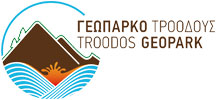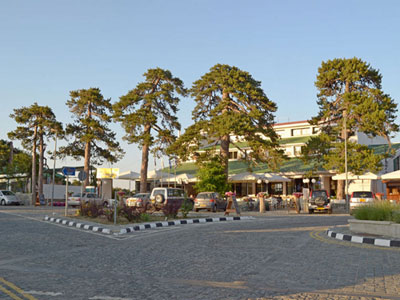|
|
Tourism A simpler, more touristic approach Touring the area
The calmness and serenity provided by Cyprus' largest mountain range is by no means an indication of limited activity. Troodos is an earthly paradise, with countless options and pleasant surprises. All the visitor has to do is respond fully to what nature has to offer.
Troodos is divided into four areas, with its backbone being the mountainous area of Paphos, Pitsilia, Solia and Marathasa, which contain most of the island’s Byzantine heritage which is protected by UNESCO. These areas stand out for their rich cultural activity throughout the year.
Starting on the slopes
Heading south, one finds the wine villages of Limassol, which have managed to maintain centuries-old traditions surrounding the cultivation of the vine and the production of exquisite wines and other vine products. The wineries that are scattered across the whole of the area produce some of the country’s best-known wines, some of which are exclusive to Cyprus, such as the internationally renowned dessert wine Commandaria.
Leaving the visitor with a sweet aftertaste like that of the wine they produce, as well as particularly romantic feeling, the wine villages offer countless options for exploring the landscape. Omodos, with its historic Monastery of the Holy Cross, is undeniably the centre if the Limassol wine village region. Around it are Vasa with its cobbled streets, Lofou, which is a listed settlement with traditional buildings, Kilani with its Saint Mavri and, a little further to the east, Lania which has deservedly earned the affection of dozens of artists who have not hesitated to make it their permanent place of residence and creativity, and the Commandaria villages around the Kourris and Xylourikos rivers.
Next, visitors can find themselves in the Larnaca hills and, to the south-west, the area of Machairas and its eponymous historic monastery, as well as the place where EOKA hero Grigoris Afxentiou died.
From wherever one sets off in the Troodos area, the magic of the landscape, the countless things to do and the hospitality of the residents guarantee a unique experience: Pitsilia, on the pine-clad southern slopes of Troodos; the main villages scattered across the peaks and valleys; Palechori with its historical and religious monuments; Agros which has enjoyed impressive tourist development. Then there are Kyperounda and Pelendri which are definitely worth a visit; villages whose names have become inextricably linked with the production of traditional meat products.
More specifically, at the heart of Pistilia lies the green village of Agios Theodoros Agrou, built on the foothills of Papoutsa. Just 54km from Nicosia and 32km from Limassol, it is also known as Eftalophi (Seven Hills) since it is built on, yes, seven hills. Almond, peach, cherry, apple, pine and poplar trees, grapevines, neat and narrow cobbled streets, stone-built houses with tiled roofs…all of these make for an enchanting landscape. It is no coincidence that some of the wonderful works of art painted by the celebrated Cypriot artist Adamantios Diamantis, who was for many years a permanent resident of Agios Theodoros, were inspired by this wonderful nature. “Agios Theodoros is the village that revealed the world of Cyprus to me,” he wrote in a letter to his friend the poet George Seferis. Lagoudera is another Pitsilia village. Forgotten by time and people, it remains famous for the ancient Monastery of the Virgin Mary (Panagia of Arakas). Its church, with its special architecture and wonderful wall paintings, is on UNESCO’s World Heritage List and attracts thousands of visitors every year. Of all the most traditional villages in the area, Alona and Askas are the biggest victims of the trend for people to move from rural areas to the towns.
The feeling that visitors get from Solia is that it is even greener, especially the valley that covers a large area from the west of Nicosia and rises gently towards the peak of Troodos. The best-exploited part of it is the village of Kakopetria which combines traditional elements with modern tourist development. The Solia valley is crossed by the Karkotis river while small streams flow down the mountainsides, keeping the area green and enabling the residents to make the most of the abundant water for cultivation and other productive activities. The Kakopetria watermills are another popular tourist attraction in the area.
The Church of the Virgin Mary (Panagia tis Asinou) on the edge of the area in which the village of Nikitari stands, the church of Panagia Podithou which is the main Byzantine monument at Galata and the unique Church of Saint Nicholas of the Roof on the western edge of Kakopetria, reveal the villagers’ religious faith and worship, marking at the same time the Byzantine wealth of Cyprus. All three churches, with their superb wall paintings, are on the UNESCO World Heritage List.
Our journey takes us further up
Ascending higher towards Troodos, with the mountain peaks in the background, the Marathas valley stretches out with a number of villages that give the impression that time has left them virtually untouched and each place has managed to maintain its natural beauty and unique traditional architecture. Kalopanagiotis is undoubtedly the jewel of the Marathas villages, with its famed healing waters and the resplendent monastery of Saint John Lampadistis which, despite having no monks there for several decades, continues to be a magnet for local and foreign visitors. There are other wonderful villages like Pedoulas, Prodromos and at least ten others, each with its own character and its own special charm.
Pride of place in the Troodos mountain resorts undoubtedly goes to Platres, there where "The nightingales don’t let you sleep" as the Greek poet George Seferis wrote, and where, in the first half of the 20th century, King Farouk of Egypt and other personalities from the world of politics, arts and letters chose to spend their summers. The hotels in the village, the options for entertainment and the countless activities, combined with the natural beauty and the services available make Platres one of the most popular tourist destinations, one that is perfect as a starting point to visit the rest of the Troodos area. |
|

